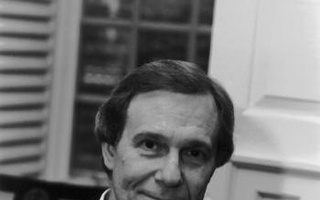
Past capital campaigns at Harvard and its peer institutions have exceeded their fundraising targets.
Part Five of a five-part series on Harvard's approaching capital campaign. Part One was published on April 29, Part Two on April 30, Part Three on May 1, and Part Four on May 2.
The last time Harvard launched a full-fledged capital campaign, it was 1994 and Drew G. Faust was still teaching history at the University of Pennsylvania. That fundraising drive, guided by then-University President Neil L. Rudenstine, surpassed its initial goals to raise a total of $2.6 billion by the time it concluded in 1999.
Today, Harvard is preparing for the September launch of a new capital campaign that looks to raise a sum that could be triple the haul accumulated in the 1990s.
To fund ambitious projects like House Renewal and the growth of the School of Engineering and Applied Sciences, Harvard must raise more money from an increasingly diverse pool of alumni in a more competitive marketplace for charitable donations.
To meet these new challenges, Harvard may look back to lessons learned from its 1990s campaign. It may also turn an eye toward its peer institutions, like Stanford and MIT, who have recently run successful capital campaigns in the 21st century.
A BIGGER PRICETAG
The number of multi-billion dollar capital campaigns has been on the rise since 2000, according to Rae Goldsmith, a vice president at the Council for Advancement and Support of Education.
Currently there are over 30 such campaigns taking place at universities across the country.
And with universities looking to fund the new technologies necessary to pursue cutting edge research, the pricetags on these campaigns are rising too.
Between 2006 and 2011, Stanford ran a capital campaign, entitled The Stanford Challenge, which raised $6.23 billion—the most of any university campaign ever, according to school officials.
For these schools, deciding how much money to raise is an important preliminary step.
Senior Harvard administrators have said that the upcoming campaign will likely look to raise at least $6 billion—a figure that could soar even higher.
Faust, the University President, said that Harvard will gauge the appropriate fundraising goal in part by taking into account the recent campaigns at peer institutions.
“If you look at other university campaigns and you look at us in comparison to their size, you get a sense of the ballpark, but we’ll come up with a number when we’re a little closer to the launch,” Faust said in an interview in early March.
Harvard may also look back to its previous campaigns and consider the success of its current two-year “quiet phase” of fundraising to help set a target for the public campaign.
Read more in University News
Carr Center Speakers Express Disapproval of Israeli-Palestinian Water DistributionRecommended Articles
-
Seven-Hundred Dollars Down...When an organization can’t raise any money, it renames the campaign and hopes for a miracle. At least, that seems
-
Professor Bell's BiddingIt is our belief and experience that a diverse faculty increases the quality of teaching. Inevitably, a class in literature, history, or anthropology would be informed, in part, by the perspective and identity of the professor.
-
Girls in the ClassroomWhen female students are called on, we often fail to articulate our ideas and arguments as confidently as male students do.
-
Swim Across America Raises $55kSwimmers from across the Boston area competed on Saturday to raise money for cancer research, at a Swim Across America fundraising event at Blodgett Pool.
-
 Q & A with Neil L. Rudenstine
Q & A with Neil L. Rudenstine -
 Lessig’s PAC Raises Millions, Despite Low Support from Harvard
Lessig’s PAC Raises Millions, Despite Low Support from Harvard













